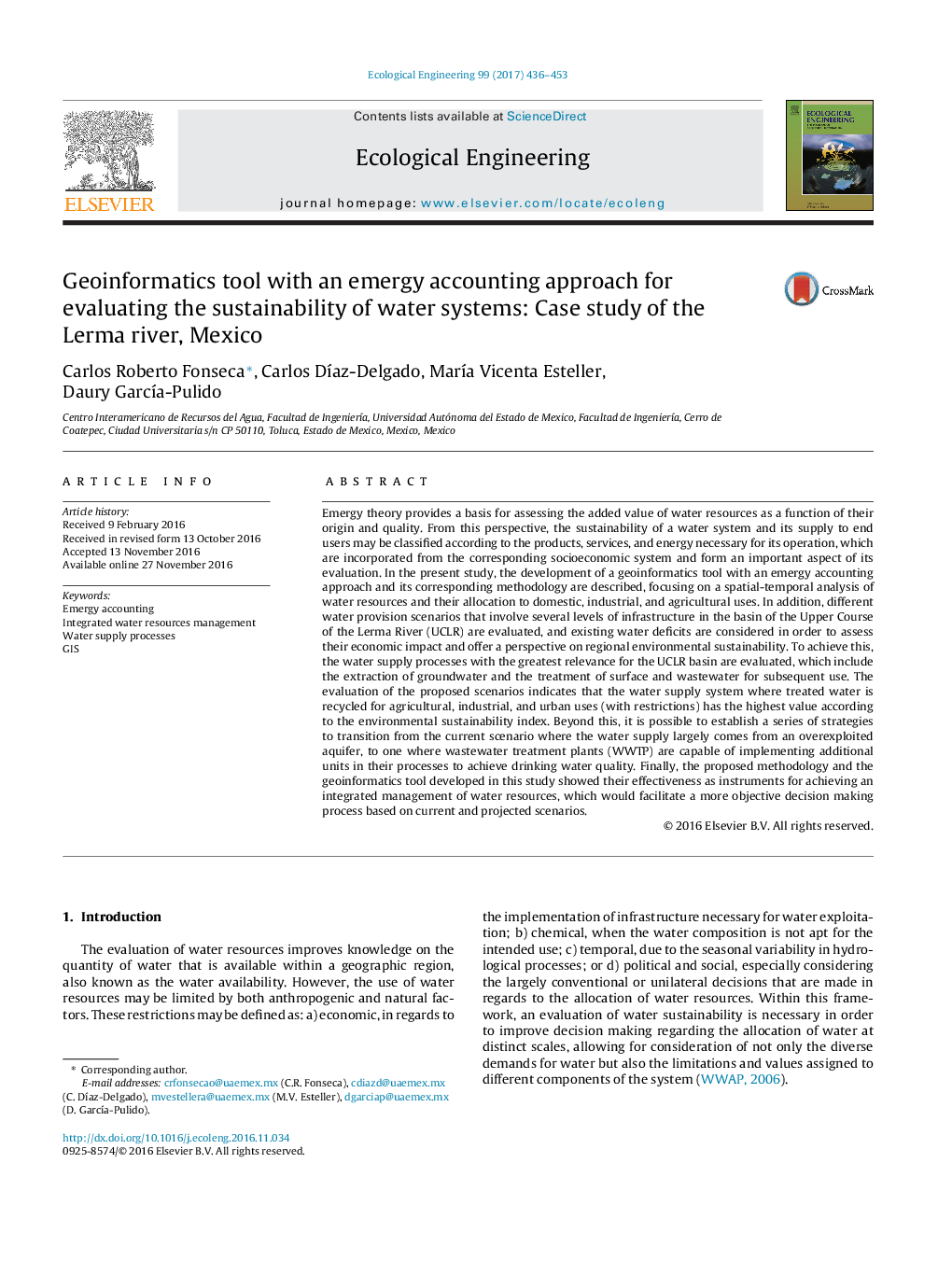| Article ID | Journal | Published Year | Pages | File Type |
|---|---|---|---|---|
| 5744013 | Ecological Engineering | 2017 | 18 Pages |
â¢A GIS tool with two modules is developed to lead the assessment of a water supply system.â¢The first module focuses on the emergy accounting of some water supply processes.â¢The second module evaluates indicators of deficit, economics and sustainability.â¢4 scenarios for supply infrastructure with hydrological variants were evaluated.â¢The assessment in the case study allowed to generate strategies for improving indicators.
Emergy theory provides a basis for assessing the added value of water resources as a function of their origin and quality. From this perspective, the sustainability of a water system and its supply to end users may be classified according to the products, services, and energy necessary for its operation, which are incorporated from the corresponding socioeconomic system and form an important aspect of its evaluation. In the present study, the development of a geoinformatics tool with an emergy accounting approach and its corresponding methodology are described, focusing on a spatial-temporal analysis of water resources and their allocation to domestic, industrial, and agricultural uses. In addition, different water provision scenarios that involve several levels of infrastructure in the basin of the Upper Course of the Lerma River (UCLR) are evaluated, and existing water deficits are considered in order to assess their economic impact and offer a perspective on regional environmental sustainability. To achieve this, the water supply processes with the greatest relevance for the UCLR basin are evaluated, which include the extraction of groundwater and the treatment of surface and wastewater for subsequent use. The evaluation of the proposed scenarios indicates that the water supply system where treated water is recycled for agricultural, industrial, and urban uses (with restrictions) has the highest value according to the environmental sustainability index. Beyond this, it is possible to establish a series of strategies to transition from the current scenario where the water supply largely comes from an overexploited aquifer, to one where wastewater treatment plants (WWTP) are capable of implementing additional units in their processes to achieve drinking water quality. Finally, the proposed methodology and the geoinformatics tool developed in this study showed their effectiveness as instruments for achieving an integrated management of water resources, which would facilitate a more objective decision making process based on current and projected scenarios.
